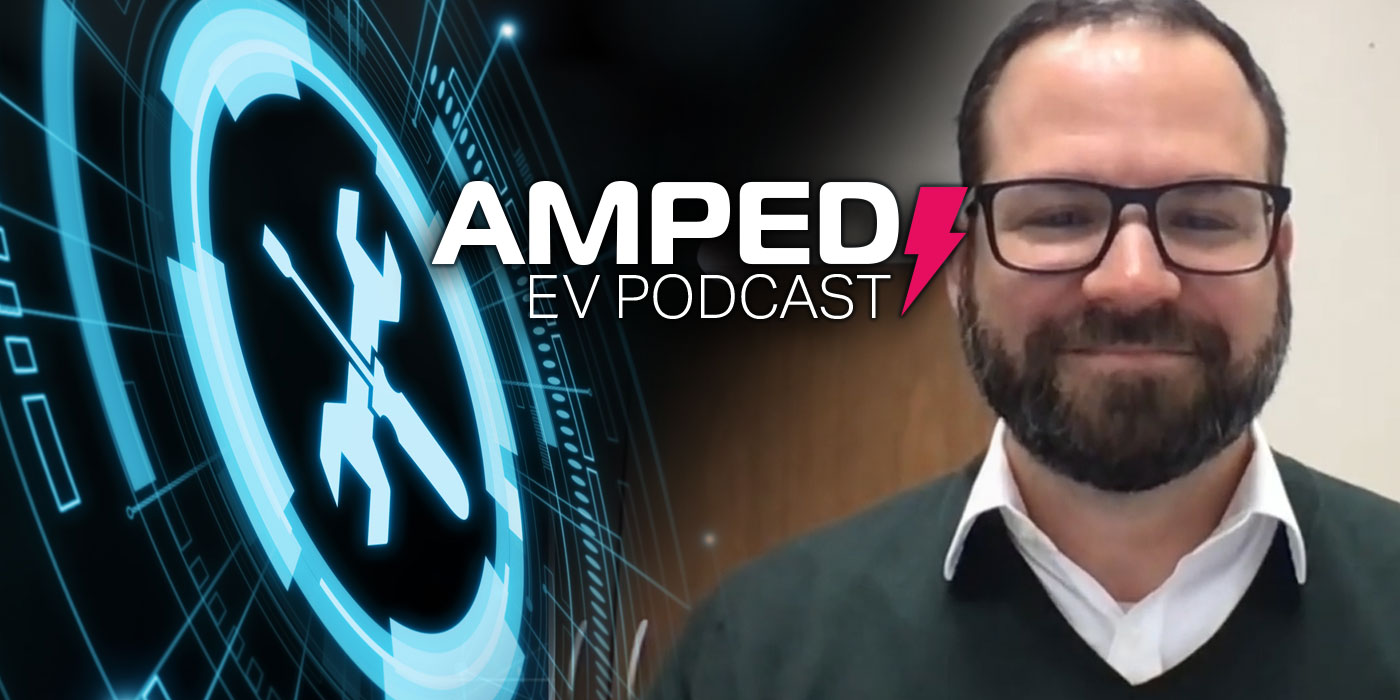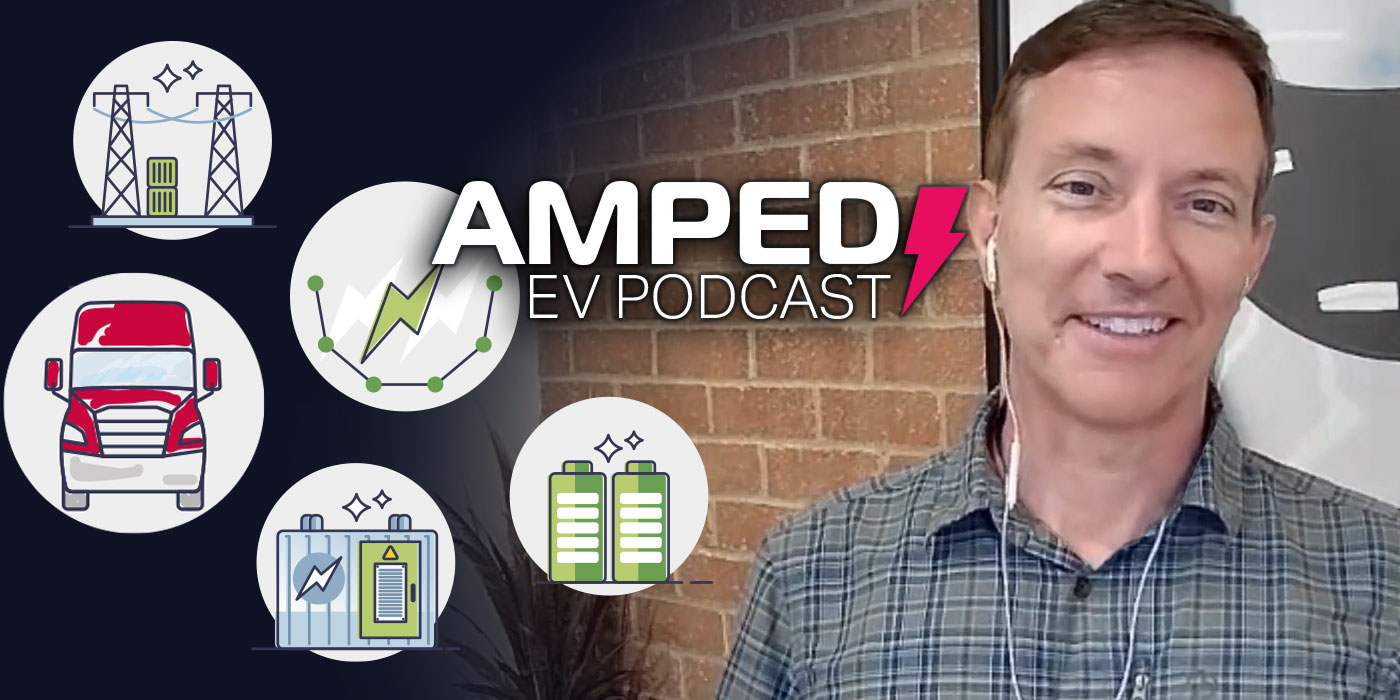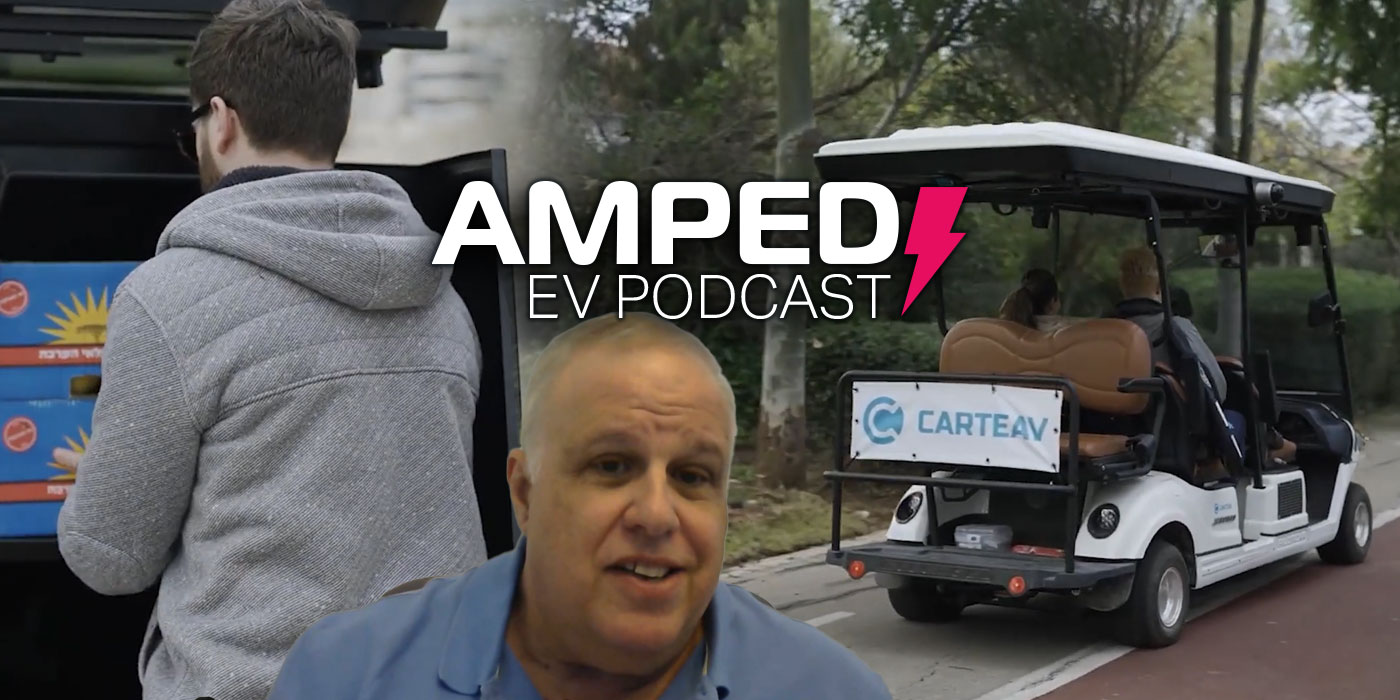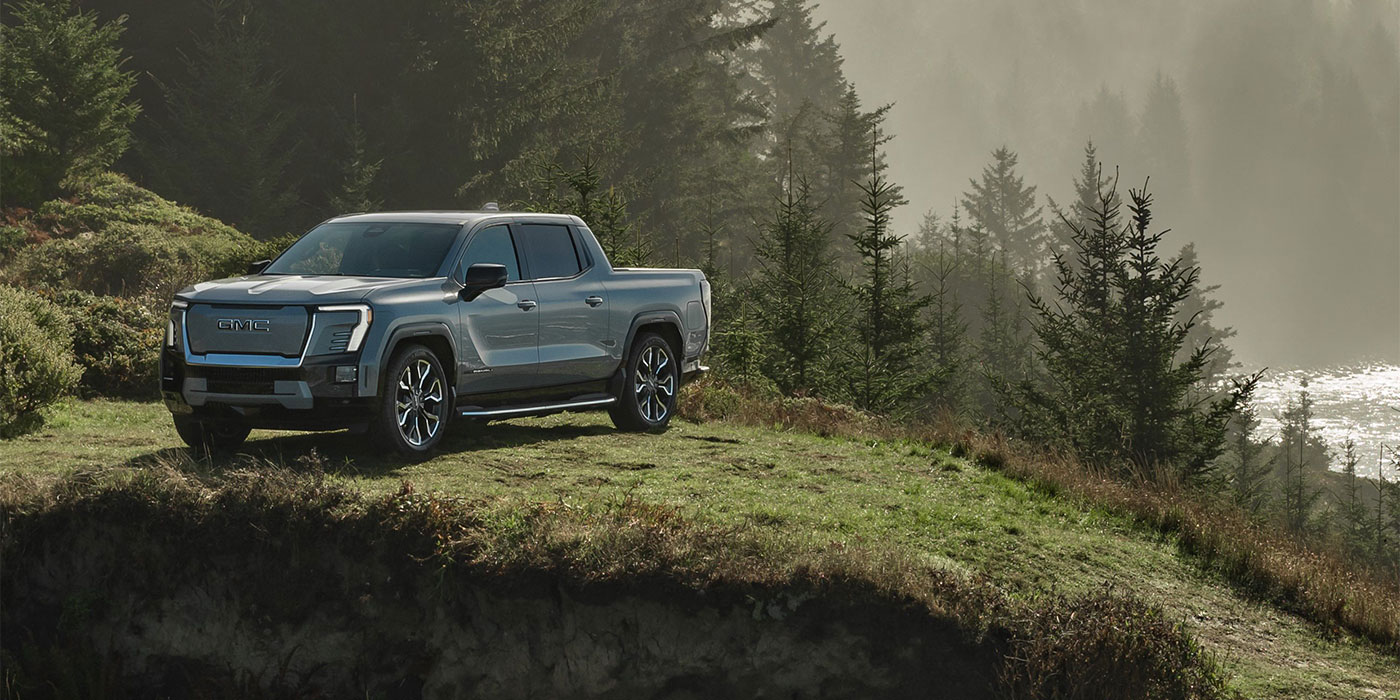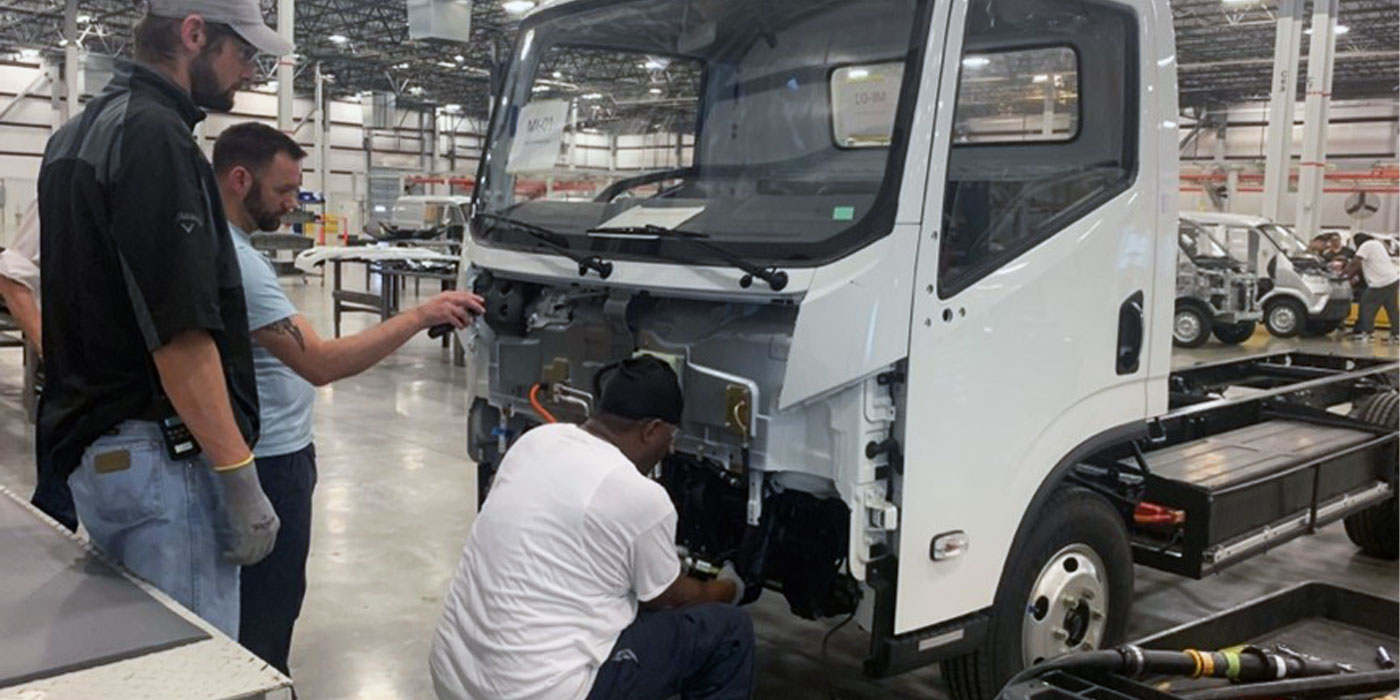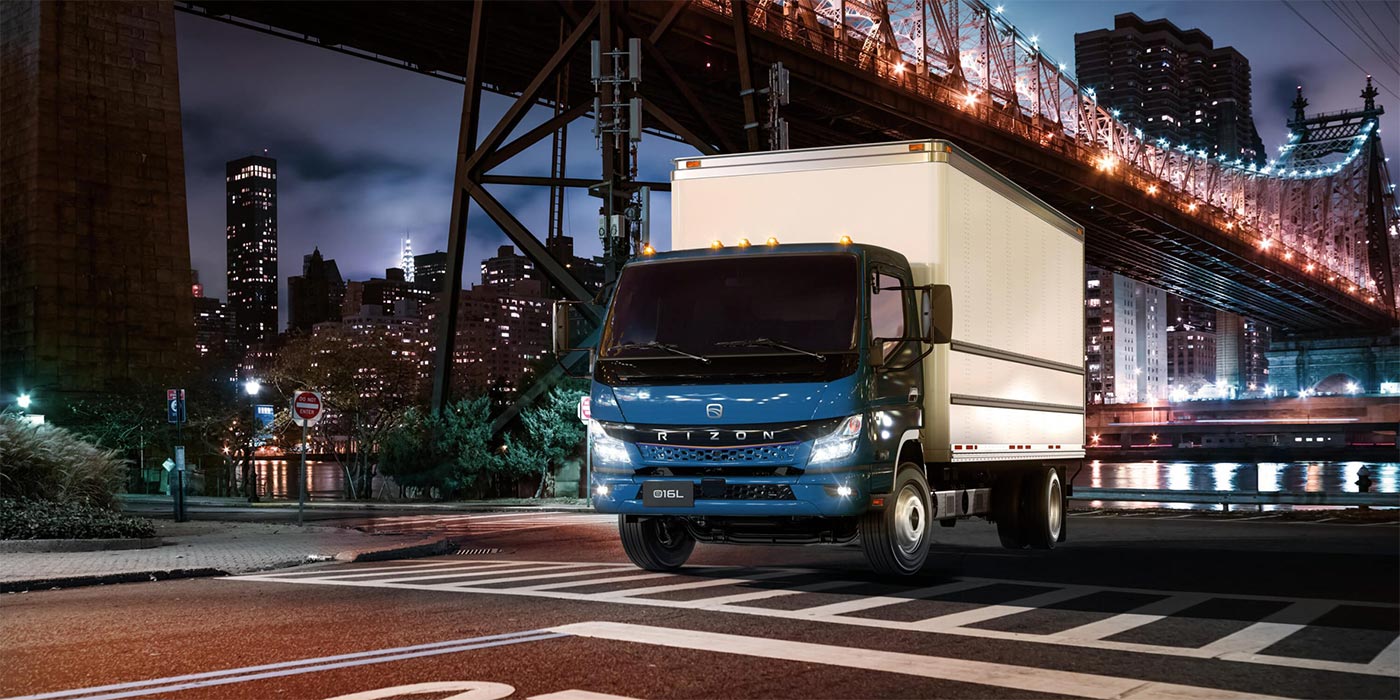Everyone is talking about EVs, so getting caught up in the hype is easy. The problem is, EVs aren’t yet suitable for every use case, and jumping into electrifying your fleet with eyes closed can have severe consequences. There’s so much to think about: What are your routes? What infrastructure do you need? How much range do you need? The list goes on. Get the answer to any of these questions wrong and you might dig an electrified hole that isn’t easy to escape.
Fear not, though – there is help to be had. Geotab’s EV Suitability Assessment Tool is a great place to start the journey. To walk us through how it works and learn about saving money via the Inflation Reduction Act, we invite Charlotte Argue, senior manager of Sustainable Mobility at Geotab, onto the show.
Want more Amped EV podcast? Click here.
Here’s a transcript of the show:
David Sickels: Hello, and welcome back to the Amped EV podcast. My name is David Sickels. I am the editor for The Buzz.
Jason Morgan: And I am Jason Morgan, Content Director for Fleet Equipment. We are going to talk about something that is near and dear to my heart. Data.
David Sickels: Okay. Yeah, data’s fun.
Jason Morgan: We’re going to talk with Charlotte Argue, senior manager of Sustainable Mobility at Geotab. Now, Geotab is clearly known for being one of the world’s largest telematics device providers. They have millions of telematics devices out there on the road, in passenger cars, pickup trucks, heavy-duty trucks, medium trucks. They have an EV suitability assessment tool that you can go on there and say, “Is EV right for me?”
Jason Morgan: Charlotte, it is so great to see you and connect again. Thank you so much for taking the time.
Charlotte Argue: Well, thanks for having me.
Jason Morgan: So, we’re going to talk about Geotab’s EV Suitability Assessment Tool. It’s a tool that’s been out there for people to use for a while. You keep evolving it, adding now pickup trucks into the tool. But before we dive into the specifics, can we just back up on you, you lay some groundwork, and give us an overview of what the tool is, how do I use it, and what does it mean to me?
Charlotte Argue: Yeah. So, the EV Suitability Assessment Tool, it’s really a tool for fleet managers. And essentially, you can think of it as an EV recommendation tool for fleets to determine where EVs are best suited in their current operations. So, what the tool does is it looks at the driving behavior of the current vehicles in the fleet, and then it pinpoints where EVs would be the best fit. And to do that, it looks at two different angles. So, the first question we try to answer is what vehicles out there, what EVs that are available on the market today, could do the job of that vehicle based on the range? So, we really ask about range capability by looking at the daily distance driven for those fleet vehicles. And we can look back at anything from a couple of months to an entire year’s worth of data to determine whether or not there would be EVs that could do the job assuming.
Now this is a little bit interesting. Where it assumes that fleets aren’t going to want to go out of their way during the day to stop and charge. So, we do a conservative estimate for the basis of the tool and say, “If you’re only charging at night, the job that you need to do during the day is the EV range capable.” And then, the second factor that we look at is whether or not the EVs would actually save the fleet money. So for that, we look at a life cycle cost comparison. If the fleet manager were to procure a new EV and replace that ICE vehicle or that gas vehicle with a new EV compared to if they were to go out and buy their traditional best-in-class or best-fit gas car, would the fleet overall spend more money or spend less money if it was an EV versus an ICE?
David Sickels: So, my understanding is that this tool, you began with passenger vehicles and SUVs. Now, you are adding pickup trucks. What are some of the unique variables between these types of vehicles in relation to your tool that matter as far as whether or not somebody might want to switch to EV?
Charlotte Argue: Yeah, so for when we simulate the range capabilities of these EVs, essentially in the ICE vehicle duty cycle, whether or not it’s a pickup truck or a regular car or sedan or SUV, what we like to do is wherever possible, we use real-world efficiency data that we’ve seen and modeled over time. So, for the light-duty passenger cars, we have many years of seeing real trip data and real efficiency data of those EVs. So, we can take into account things like how does temperature or how does local climate impact the real world or the true range rather than just assuming rated range. And the same comes with pickup trucks. So, as electric pickups started to come to the market, what we’re starting to build is our modeling tool for these real-world trips that are driven by these electric pickups to start to model out how these vehicles will actually perform. And so, we’re continuously improving on those models.
A lot of these pickups are very new. So, we’re having to start with rated range, and then start applying what we know about other factors and how it impacts range. And over time, we’re going to improve the models. But there are not a lot of differences in terms of some of the typical factors, like climate or temperature. Pickups respond in very similar ways in terms of their efficiency as a light-duty car. So, we’ve seen that we’ve been able to apply a lot of the same types of assumptions or types of multiplying factors across with the pickups, as well.
Jason Morgan: Right. Okay. So, all the information that you’ve had historically with… I mean you’re up to millions at this point, millions of vehicles on the Geotab platform, right? So, you’re able to build those models and see what they’re really doing out in the real world. Because we talk a lot about range anxiety, and I have range anxiety, right? But what am I really driving and what do I really need and how do I really make that fit? It’s super cool to see how you’re doing that. Do you see this changing the conversation when people talk about EVs, either through how they’re using the tool or even conversations you’re having with customers, and there is hesitancy there. How does the tool help change any hearts and minds of the customers?
Charlotte Argue: Yeah. I think where a tool like this comes into it, or where we see the most traction or resonance with fleet operators, is really those fleets who haven’t had a lot of exposure to EVs to date. It’s a new technology. It’s an emerging market. There are still a lot of questions around range, range anxiety, can this vehicle actually do the job that I need it to do? And I’m sure you’ve come across the range gasometer idea. If the car is giving you a certain range, is that actually what you’re going to get? And it keeps changing as you drive. So, what we find, it’s actually quite similar to the consumer market, I find, with fleet drivers and fleet operators, where the more they have exposure to EVs, the more confident they get in those vehicles and the less anxious they are about range. But with fleets who are just getting started, range is a perceived barrier in a lot of cases.
Being able to provide them with that confidence and understanding, “Okay, this isn’t just an average rated range that I should assume. It’s really what these vehicles are capable of doing in real-world scenarios.” And then, the fact that we’re looking at their actual mileage and their actual daily utilization for their vehicles just provide that confidence or that peace of mind that this is data-driven. It’s taking out the guesswork, I guess, on that decision. And one thing I’ll say about ranges, it’s not just about confidence in the EV. It’s also about the perceived distance that the existing fleet vehicles are driving. So, if you ask a fleet operator, “What is the longest driving day you had in the last year with vehicles X, Y, and Z?” More often not than not, they’re going to overestimate that number. So, what we’re able to do is say, “Well actually, this is exactly how far you’re driving every day.”
And we did a macro analysis of about 400,000 light-duty trucks. So, pickups across our customer base to look at a year’s worth of daily driving distance.
Jason Morgan: Right.
Charlotte Argue: And about 50% never exceeded 280 miles in a single day for the entire year. So, that just provides a bit more peace of mind of, “Okay, while I think I might need a 600-mile range, I actually need a 300-mile range or less.”
Jason Morgan: Right.
Charlotte Argue: And then, the other piece that I think this type of analysis really helps with is the challenge fleets are having with the higher capital cost, or the upfront cost. So oftentimes, with the procurement process, you have two choices. You have your EV, or you have your best-in-class gas vehicle replacement. And looking at the sticker price of the two, it’s a lot harder to convince whoever’s holding the purse to spend the extra money upfront to justify purchasing an electric vehicle. So, what this tool in fact does is it flips that argument of, “I can’t afford an EV,” on its head and says, “Well actually, in these situations, you can’t afford not to buy an EV because you’re actually going to be saving money over the five-year or seven-year life cycle or maybe more.” So, you’re losing money by not deciding to switch this vehicle out for an electric.
David Sickels: So, speaking of saving money, I wanted to bring up the Inflation Reduction Act and possible incentives coming from that. How does that change the EV conversation as far as development adoption? And how does that change the equation when it comes to your tool?
Charlotte Argue: Yeah. So, even when we look at the total lifecycle cost, and even where there is a benefit for the EVs over the gas vehicles, that capital cost is still a challenge. So, when the total cost of ownership is favorable, being able to bring down the upfront cost with incentives, that still makes a really big difference for a lot of fleets. And then, what we’ve seen for those situations where the duty cycle doesn’t quite meet that total cost of ownership benefit, these incentives will just flip the scale, or tip the scale, to prefer the EVs. So incentives, it’s still a really important piece of the business case and the business model for fleets to justify going electric today. And not just for the vehicles themselves, but for the charging infrastructure. So, this is one thing for our EV Suitability Assessment, we include the operational cost of charging, but we exclude the upfront cost of actually installing that charger.
And the reason why we haven’t included that in this self-serve widget is that it can vary so dramatically from fleet to fleet and from facility to facility. So, being able to calculate or estimate the capital cost of the infrastructure, you’re not going to get it. It’s not going to be right. It’s going to be an average, and averages in this case aren’t going to be right for that fleet. So, the Inflation Reduction Act, the incentives, there are also incentives for the charging station piece, which can be a high capital cost for fleet operators or for facility managers, and that will help them get over that extra hurdle or barrier.
Jason Morgan: Yeah, for sure. And still, a lot to unpack with the Inflation Reduction Act, too. I mean, even just talking, I was with an OEM not too long ago, just talking about how you even put it into place, how it impacts maybe purchase or lease or truck as a service or charging as a service. And there are still plenty of questions to answer there. But it sounds like you’re tackling a lot of real-world questions, right? Those application questions, can the equipment do the job? And what money am I going to make with it? Which I think is at the heart of every fleet manager’s business. So, really great to connect with you and hear all about that. It gave us a lot of good things to think about. I’m sure we will talk to you again as this tool continues to evolve.
Charlotte Argue: Excellent. Well, thanks so much, again. And yeah, I’m really amped to see what you have in the future.
Jason Morgan: There we go. Perfect. Well, it’s great talking with you, Charlotte. We’ll connect again soon.
Jason Morgan: Hot Take. My favorite, I love that everybody overestimates the amount of work they’re doing.
David Sickels: We’re all doing more work.
Jason Morgan: Yeah. I did 10 interviews today, by the way, just for reference. 10 interviews. When you go back and roll the tape, you’re like, “No sir, you did one.” And you’re like, “Oh yeah. I guess I just need a show that does one interview. That’s my range.” But I love that because we do talk about range.
David Sickels: You’re right.
Jason Morgan: I think that’s something that we’ve addressed or alluded to before. It’s like maybe you don’t need that range. But it’s more of a feeling and a hand ringing, and to her point, the awareness or exposure to EVs and what they can offer.
David Sickels: Yeah. It’s the thought, “I want to have it in case I need it.” Maybe I’m not running 600 miles a day, but if I do, I really want that range. But when you’re talking about this new type of technology where you’re not really sure exactly where it’s going to fit into your bottom line, going for that 600 range, maybe you really don’t need it.
Jason Morgan: Right. Well, and you don’t need to wait for, right? The other thing she brought into the conversation was total cost of ownership over the vehicle life cycle. She mentioned a number of times that the capital investment upfront, it can be a hard pill to swallow.
David Sickels: For sure.
Jason Morgan: But if you look at it over the long term, then you can see where you can make some money there as a commercial operation. So, I think it’s cool. I might go mess around with it myself. See if I’m ready for EV. Are you ready for EV?
David Sickels: I don’t know. I’ll mess around and see.
Jason Morgan: All right. Well, we will see you next time. Thanks for watching.







